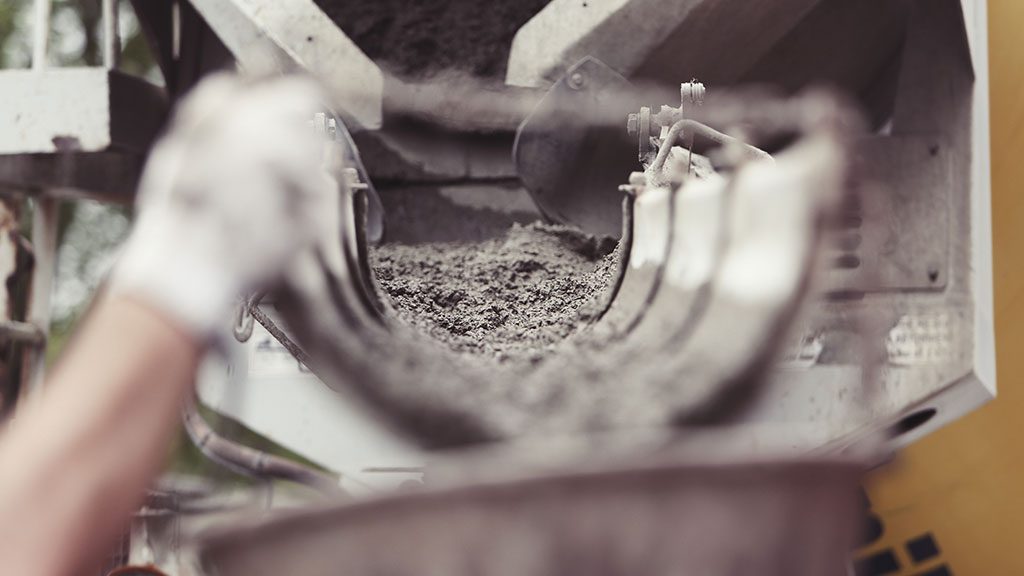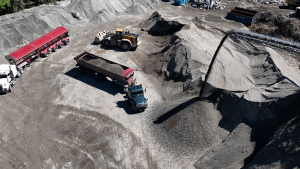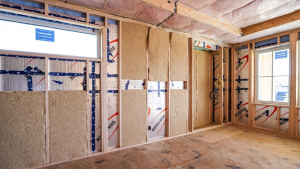Researchers at the University of Manitoba have developed a cementitious material that combines two important features, strength and quick hardening, that can be used for the partial depth repair of concrete pavements.
Partial depth repair is a rehabilitation technique used to restore concrete pavements with localized surface distress, such as spalls (flaking and peeling) and wide cracks.
Although some cementitious repair materials are strong when young, many of them are vulnerable to cracking, poor bonding and premature deterioration.
“The research project to develop the material began in 2013 with work in the lab developing and testing different concrete mixes,” said Mohamed Bassuoni, professor of civil engineering at the University of Manitoba.
Bassuoni said the repair mixes contain nano-silica, a nano-material that gives concrete repair a helping hand.
Its benefits include faster hydration, setting time and strength development; improved mechanical properties; and reduced shrinkage.
“They all contribute to making the concrete more durable and long-lasting,” Bassuoni said.
The project involved mixing nano-silica with 15 per cent to 30 per cent fly ash concrete to produce nano-modified fly ash concrete (NMFC), which, Bassuoni said, is unique in the world.
After the researchers were satisfied with the lab results, they teamed up with the City of Winnipeg for a field trial on an actual Winnipeg street that was open to everything the hot, cold, sunny and windy prairie climate could throw at it.
The trial, the first of its kind in Canada and second in North America, took place in August 2016 on the transverse joints of a six-car-length stretch of Roblin Boulevard, a commuter street in southwest Winnipeg.
“Because we weren’t sure how the test concrete would perform in the field, we needed to be careful,” said Bassuoni. “We couldn’t take the chance of performing the trial on a major traffic artery. However, all the joints that were repaired are in a heavily-used bus lane, so they are getting a good workout.”
Bassuoni said the NMFC mixtures produced and applied in the field trial had what are technically called “reasonable consistency and slump retention suitable for placement and finishing operations.”
In addition, they achieved the target rates of strength development, homogeneity of elastic behaviour and resistance to ingress of fluids.
Nano-modified fly ash concrete is a sustainable and cost-effective option
— Mohamed Bassuoni
University of Manitoba
Bassuoni is optimistic that NMFC can hold its own as a repair material.
“Transportation agencies will be able to control fresh or hardened properties by adjusting the proportions of ingredients,” he said. “And repair costs can be reduced because less expensive fly ash replaces some of the cement.”
Bassuoni said the research team estimates the cost of NMFC materials with a normal setting time will be comparable to the cost of conventional concrete.
And materials with an accelerated setting time will be about 12 per cent higher than the cost of conventional concrete.
“Nano-modified fly ash concrete is a sustainable and cost-effective option for repairing concrete pavements,” Bassuoni said. “We expect it to have a measurable impact on reducing the life-cycle cost of partial depth repairs because of its durability and longevity.”
Most of the roads in Winnipeg are made of either concrete or asphalt over concrete, said Rod Hamilton, manager of Winnipeg’s asset management office in the department of public works.
“Concrete streets last longer than asphalt — about 40 years compared to 25 to 30 years — but they’re harder to maintain than asphalt,” Hamilton said.
Most residential streets, which get less use than major arteries, don’t need to be made of concrete.
But streets that are built on top of the silty soils adjacent to the Red and Assiniboine Rivers that flow through the city need to be made from the more durable and longer-lasting concrete.
“However, the quality of asphalt in the last five to 10 years has improved, so we have been using more asphalt,” said Hamilton.
Concrete roads, which have joints every 20 feet that can wear quickly, need careful preventive maintenance.
“The freeze-thaw cycle in late winter wreaks havoc on our streets,” said Hamilton.
Most of Winnipeg’s road repair work begins in May, once the ground has finished thawing out, and continues until November, when the earth heads back into hibernation.
The University of Manitoba researchers and the City of Winnipeg have been monitoring the performance of the repair trial site.
Some time in the next year or two the city will get a final report from the university researchers with their recommendations, after which Winnipeg will decide whether or not to put the test product on its approved product list.
“We’ve been happy with the results of the field test so far,” said Hamilton.











no mention was made of reinforcing. I presume that this material is used as a thin, skim coat to repair surface defects. The high fly ash content is intriguing.